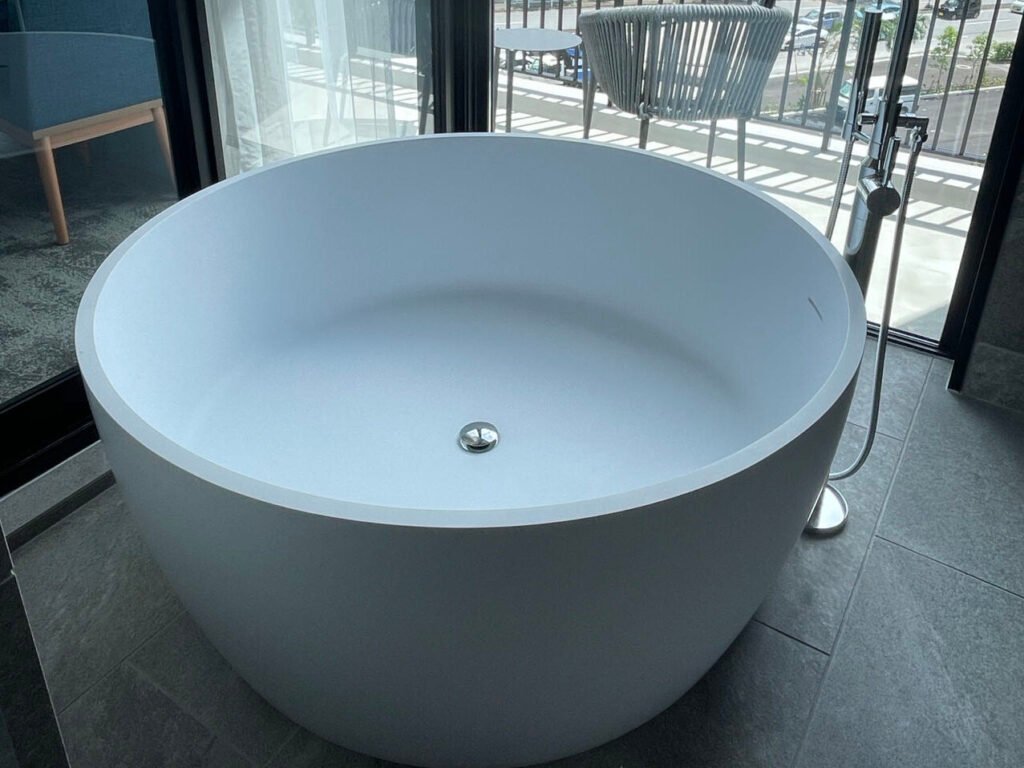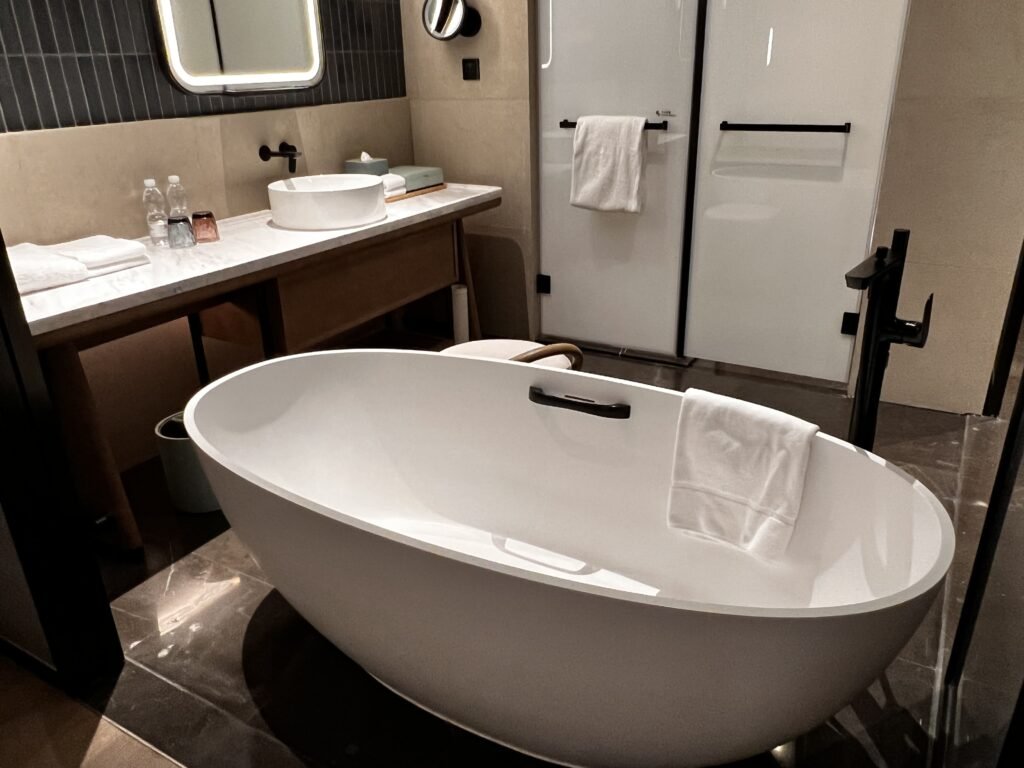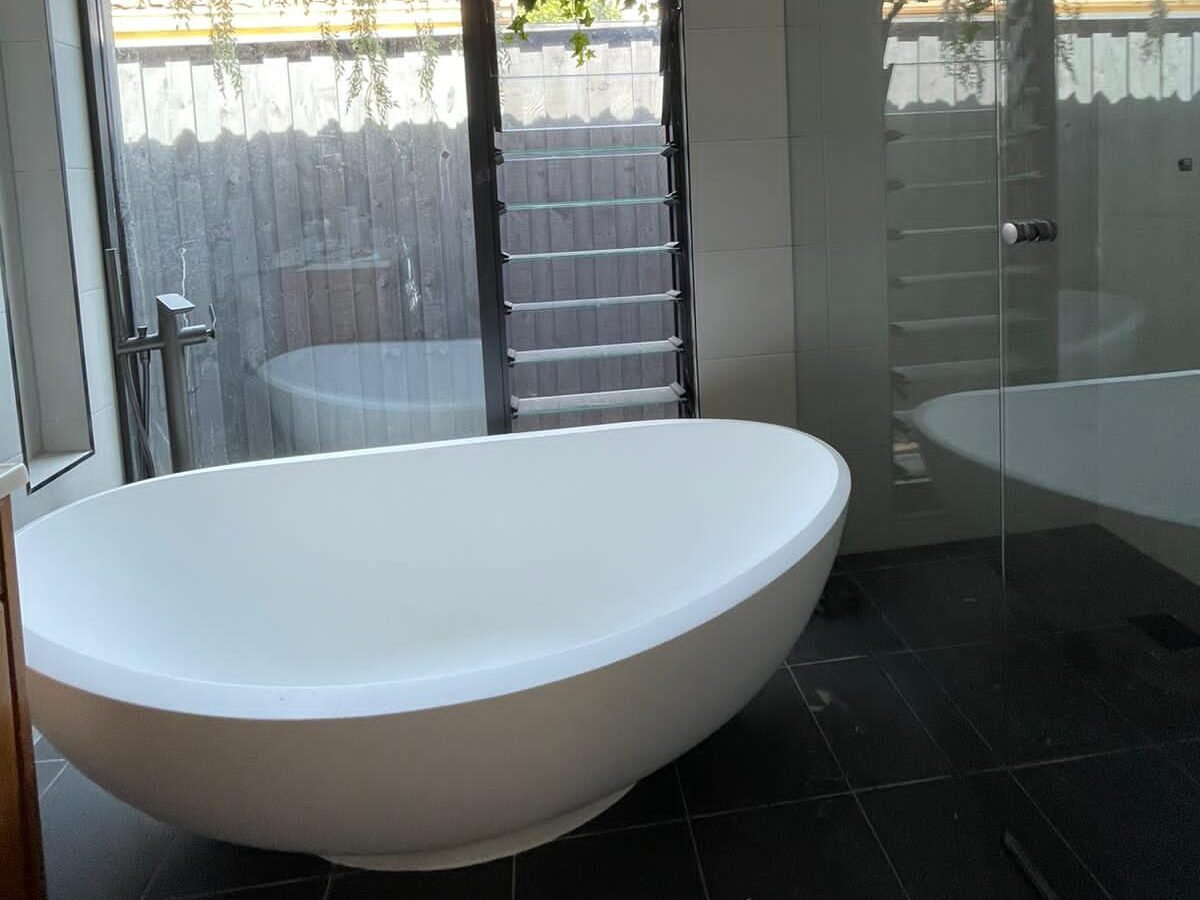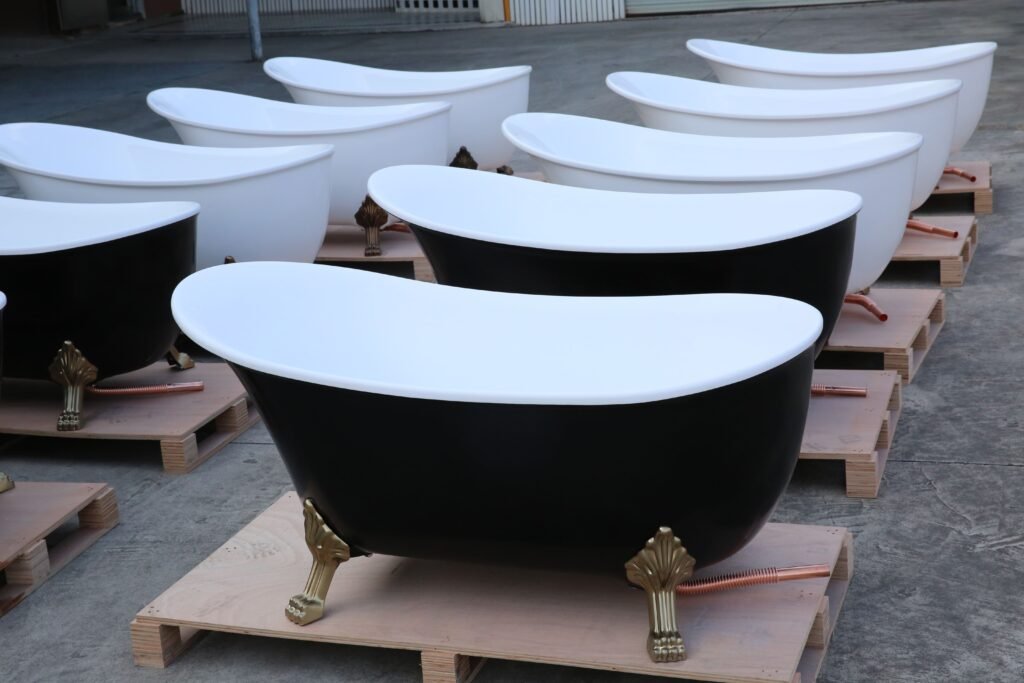Solid surface bathtubs are loved for their seamless aesthetics, luxurious texture, and durability. However, one aspect that contractors and designers must not overlook is weight. Compared to acrylic or fiberglass tubs, solid surface bathtubs are significantly heavier — and this has direct implications for flooring support and structural design.
Whether you’re developing a luxury hotel, residential villa, or high-rise apartment, understanding how to plan for bathtub weight and reinforcement is critical for safety, longevity, and compliance.


Why Solid Surface Bathtubs Are Heavier
Solid surface material is composed of aluminum trihydrate (ATH) and high-performance resin, resulting in a dense, stone-like structure.
While this gives the bathtub strength, heat retention, and durability, it also means more mass per cubic inch than most synthetic alternatives.
Average Bathtub Weight by Material:
| Material | Empty Weight (kg) | Filled Weight (kg, incl. water + person) |
|---|---|---|
| Acrylic | 40–60 kg | 220–250 kg |
| Fiberglass | 35–55 kg | 200–240 kg |
| Solid Surface | 100–180 kg | 300–450 kg |
| Cast Iron | 130–200 kg | 400–500 kg |
A freestanding solid surface bathtub can weigh up to 180 kg empty — nearly double an acrylic tub. Once filled with water and a person, total weight can exceed 400 kg (880 lbs).


Why Flooring Reinforcement Matters
Without proper support, a floor can deflect, crack tiles, or even weaken the structure beneath the bathtub. This is particularly important for installations:
- In upper floors of hotels or apartments
- On timber joist flooring
- In older buildings with uncertain subfloor integrity
Building codes in most countries require that bathrooms support concentrated loads like bathtubs safely, but reinforcement should always be confirmed at the design stage.
How to Reinforce Flooring for a Solid Surface Bathtub
1. Assess the Subfloor Type
Identify whether your base is concrete slab, timber joist, or lightweight screed.
- Concrete floors typically already provide sufficient load capacity.
- Timber floors may need cross-bracing or additional joists.
- Lightweight or raised floors often require metal framing reinforcement beneath the tub.
2. Distribute Weight Evenly
Use a reinforced load plate or underlay board to distribute pressure evenly across the floor. KKR® recommends an even support base covering the full footprint of the bathtub — never install on just four feet or edge supports.


3. Use Proper Bedding Material
For stability, install the bathtub on a bed of cement mortar or polyurethane foam designed for load-bearing applications. This helps absorb vibration and prevents stress cracks.
4. Check Load Bearing Capacity
Standard residential floors typically support 150–200 kg/m², but a filled solid surface bathtub may exceed this. Reinforcement should increase support to at least 300–400 kg/m² depending on tub size.
5. Consult Structural Engineers for Large Installations
For luxury hotel projects or multi-unit residences, it’s best to involve a structural engineer early. They can evaluate joist span, subfloor condition, and beam spacing to ensure safe installation.
KKR® Bathtubs: Lightweight Strength and Stability
While solid surface bathtubs are inherently heavy, KKR® optimizes manufacturing with:
- Balanced resin-to-mineral ratio, ensuring strength without excessive weight
- Hollow or partially solid base structures, reducing mass while maintaining rigidity
- Precision flat bases for full-floor support and easy installation
- Optional pre-reinforced bottom panels for high-rise applications
These design refinements allow architects and contractors to integrate luxury bathtubs without compromising on structural integrity or installation convenience.


Common Installation Mistakes to Avoid
- Installing directly on uneven flooring without full contact support
- Ignoring joist direction and spacing in wooden subfloors
- Filling the bathtub before sealant or base mortar fully cures
- Forgetting to verify total filled weight during the planning stage
- Using incompatible adhesives that affect thermal expansion stability
Conclusion
Solid surface bathtubs offer unmatched beauty and longevity — but their weight demands careful planning. With the right flooring reinforcement, they become a durable and safe centerpiece for any luxury bathroom project.
KKR® brings 25 years of experience in solid surface manufacturing, offering customized bathtub solutions for hotels, villas, and residential projects worldwide. Each bathtub is tested for load, thermal expansion, and impact resistance to ensure safety and long-term performance.
👉 Explore full specifications and engineering support at www.kkrbath.com/bathtub
FAQ
Q1: How heavy is a solid surface bathtub compared to acrylic?
A: Solid surface bathtubs typically weigh between 100–180 kg, almost twice the weight of acrylic models.
Q2: Do I need floor reinforcement for a solid surface bathtub?
A: Yes, especially for upper floors or wooden joists. Reinforcement ensures safety and prevents tile cracking or subfloor damage.
Q3: Can a solid surface bathtub be installed on wood flooring?
A: Yes, but additional support such as cross-bracing or plywood underlay is required.
Q4: Is solid surface too heavy for apartment bathrooms?
A: Not necessarily. With proper support and even load distribution, solid surface bathtubs are perfectly suitable for apartment projects.
Q5: How does KKR® ensure bathtub safety?
A: Every KKR® bathtub undergoes structural load testing and full-base reinforcement design to ensure stability across different project types.




